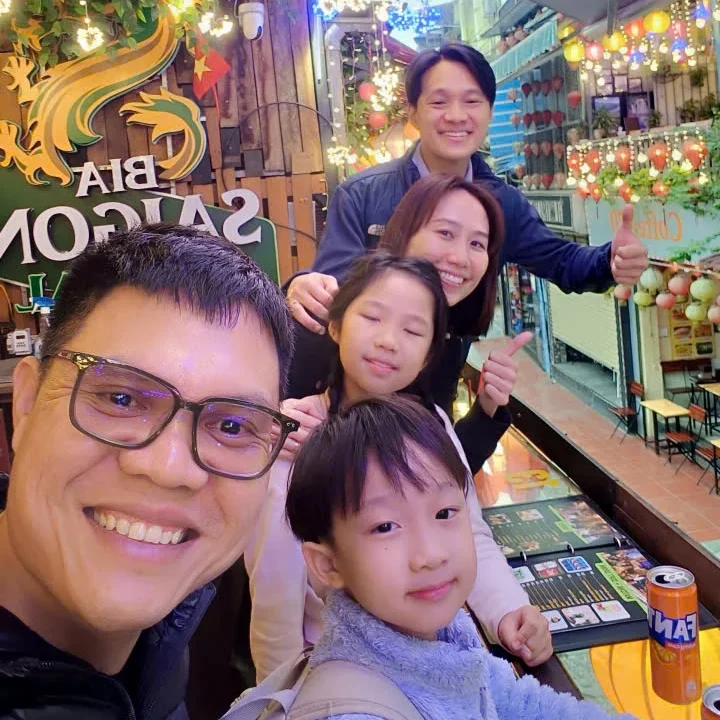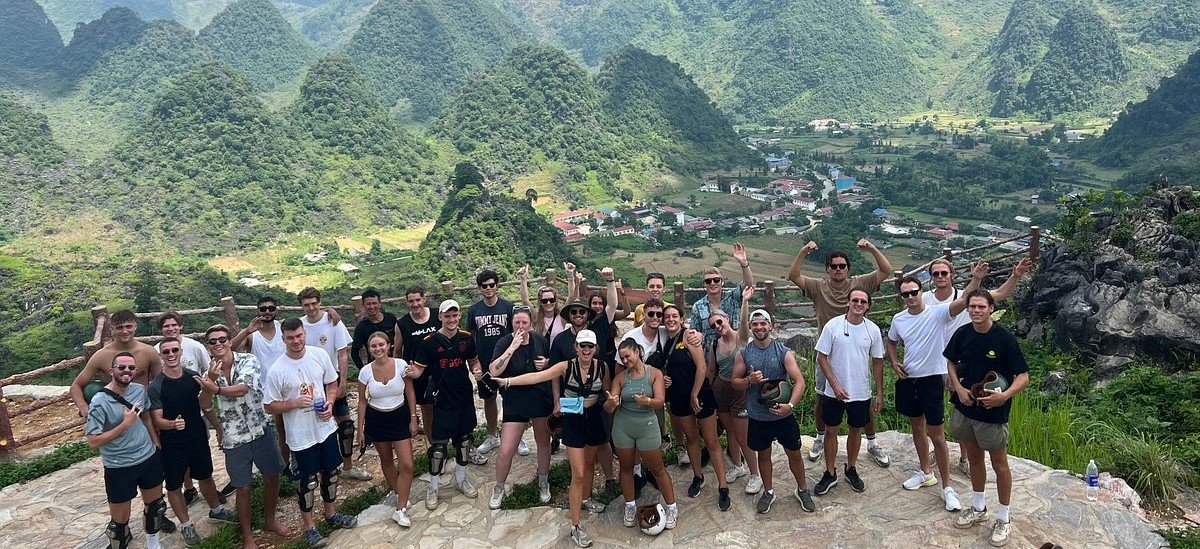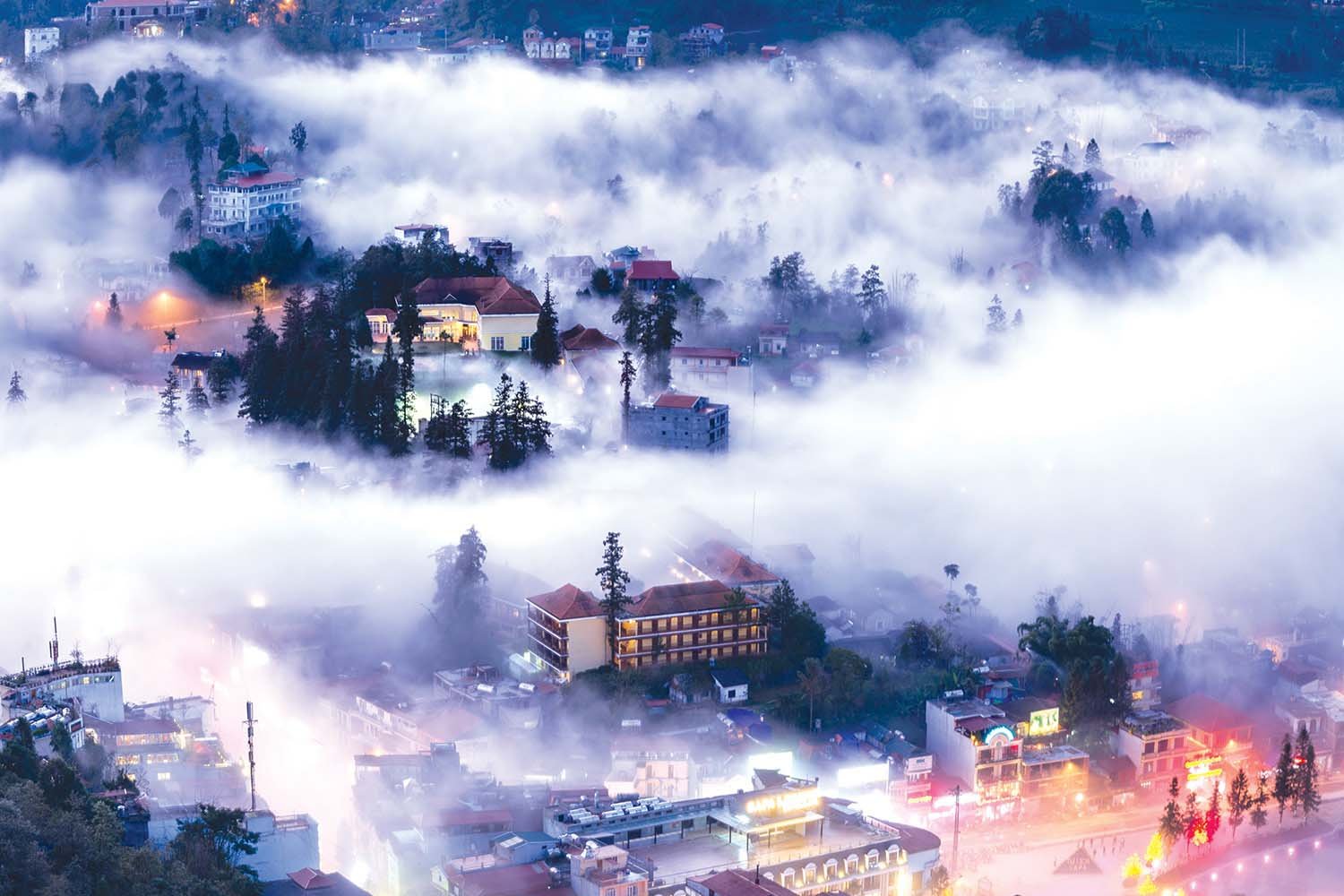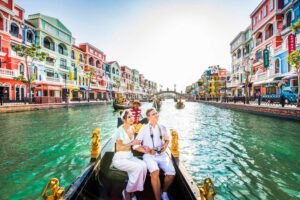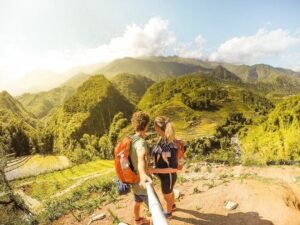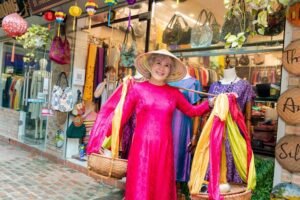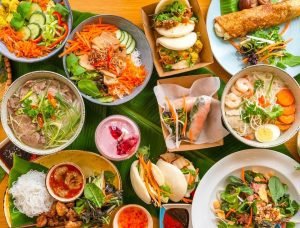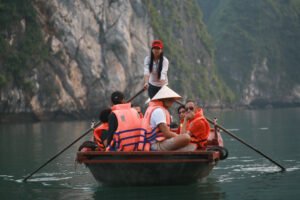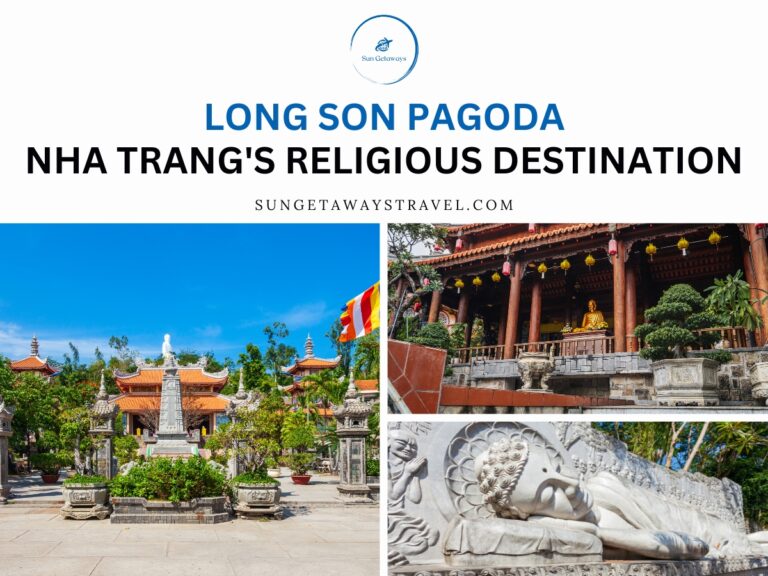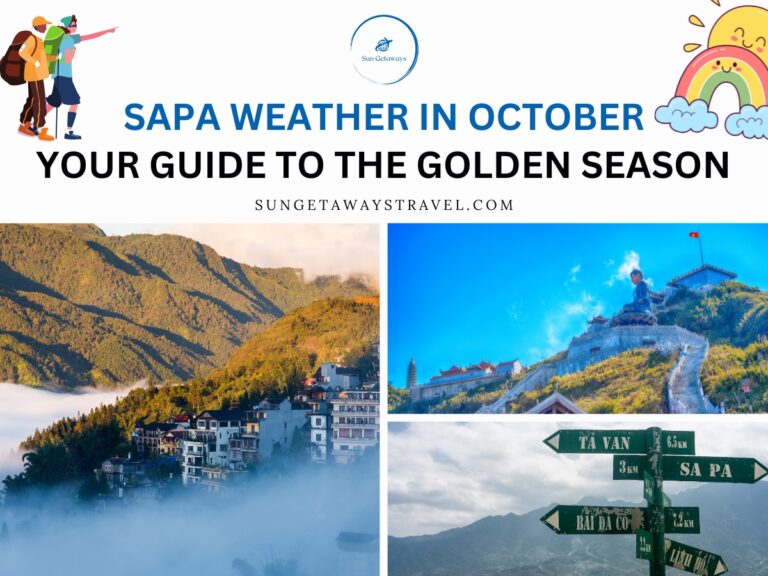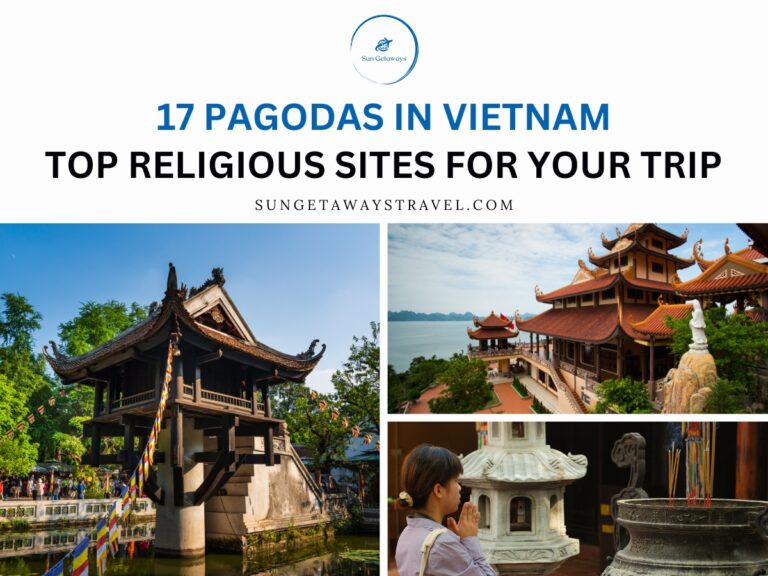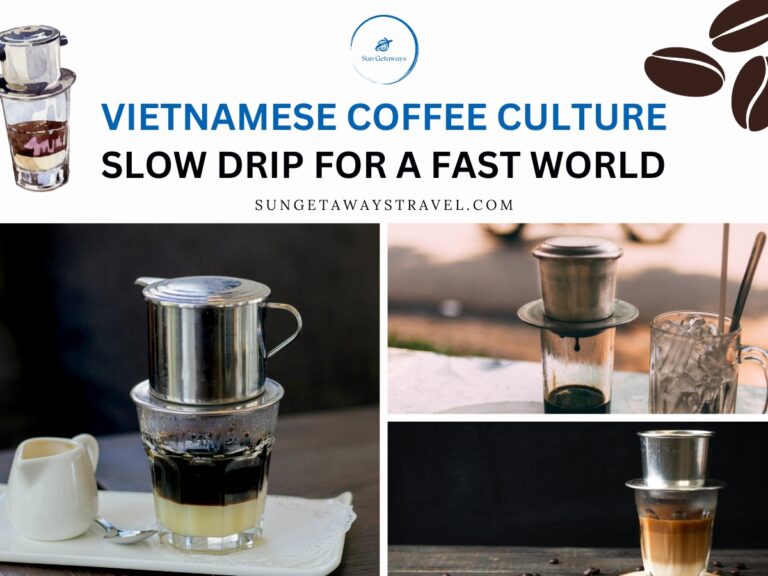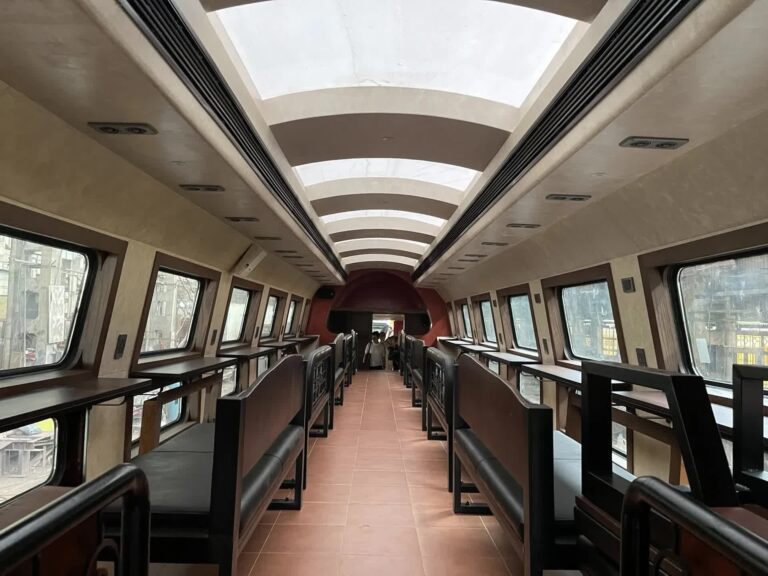Northern Vietnam Safety: Trekking and Motorbike Travel Tips
Northern Vietnam is a dream for adventurers. From the rice terraces of Sapa to the dramatic limestone mountains of Ha Giang, this region is rugged, remote, and incredibly rewarding. But with great beauty comes great responsibility—especially when it comes to Northern Vietnam safety.
Whether you’re planning to trek in Sapa or conquer the Ha Giang Loop by motorbike, understanding the risks and preparing accordingly will ensure your trip is both memorable and secure. In this guide, we’ll break down everything you need to know to stay safe in Northern Vietnam’s most iconic destinations.
Trekking in Sapa: Terrain, Weather & Guide Safety
Trekking through Sapa‘s misty valleys and towering rice terraces is an unforgettable experience. But the region’s unpredictable weather and challenging landscapes mean that Sapa trekking safety should be a top priority.
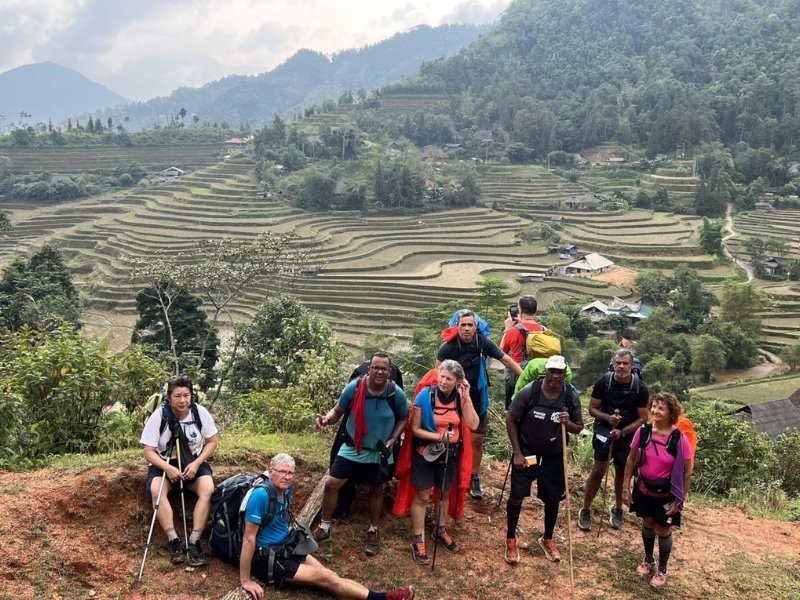
👉 Explore: 10-Day Ha Giang Authentic Trekking
1. Dealing with Unpredictable Weather
The mountains in Sapa are known for rapid weather changes. What starts as a sunny morning can turn into a slippery mess by afternoon.
- Always pack a lightweight rain jacket or poncho.
- Wear non-slip, waterproof hiking boots.
- Avoid steep trails during heavy rains due to landslide risks.
2. Understanding the Terrain
The terrain in Sapa includes narrow paths, steep inclines, and muddy rice fields. Falls and twisted ankles are common among unprepared trekkers.
- Use trekking poles for better balance.
- Stick to marked trails and avoid shortcuts.
- Take your time—rushing increases the risk of accidents.
🏔️ Explore: What To Eat In Sapa? Top 5 Must-Try Dishes For Tourists
3. Going with a Local Guide
One of the best ways to prioritize Sapa trekking safety is to hire a certified local guide. Not only do they know the terrain, but they can help in emergencies and offer rich cultural insights.
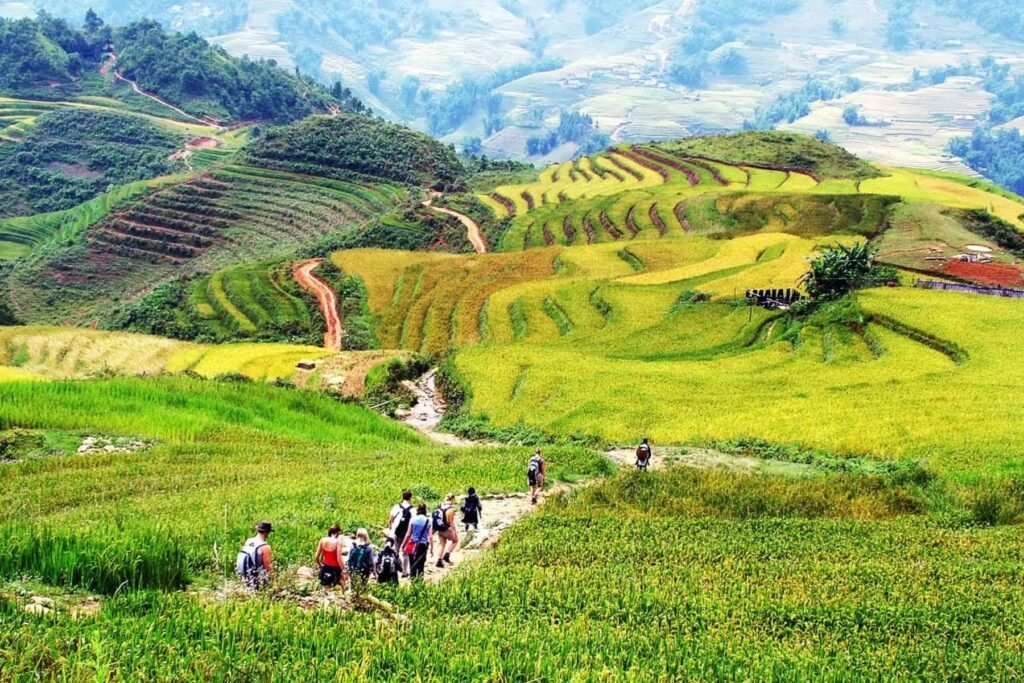

- Choose guides who are registered with local tourism boards.
- Confirm they carry first-aid kits and speak basic English.
- Avoid solo trekking unless you’re highly experienced.
Exploring Vietnam’s stunning northern mountains requires specific safety awareness. Sun Getaways Travel partners with experienced, licensed local guides for treks and motorbike tour, conducts thorough safety briefings, and has protocols for remote situations, ensuring your adventure is both thrilling and secure.
Motorbiking the Ha Giang Loop: Road Conditions, Rentals & Legal Requirements
The Ha Giang Loop is one of Vietnam’s most scenic and exhilarating road trips. But winding mountain roads, weather exposure, and varying road conditions make Ha Giang Loop safety a serious concern—especially for first-time riders.
1. Navigating the Mountain Roads
The roads through the Ha Giang Loop are narrow and filled with sharp turns, steep drops, and the occasional pothole.
- Slow down before every blind curve.
- Honk when approaching tight bends (locals do this too).
- Avoid riding at night—visibility is limited and roadside help is scarce.
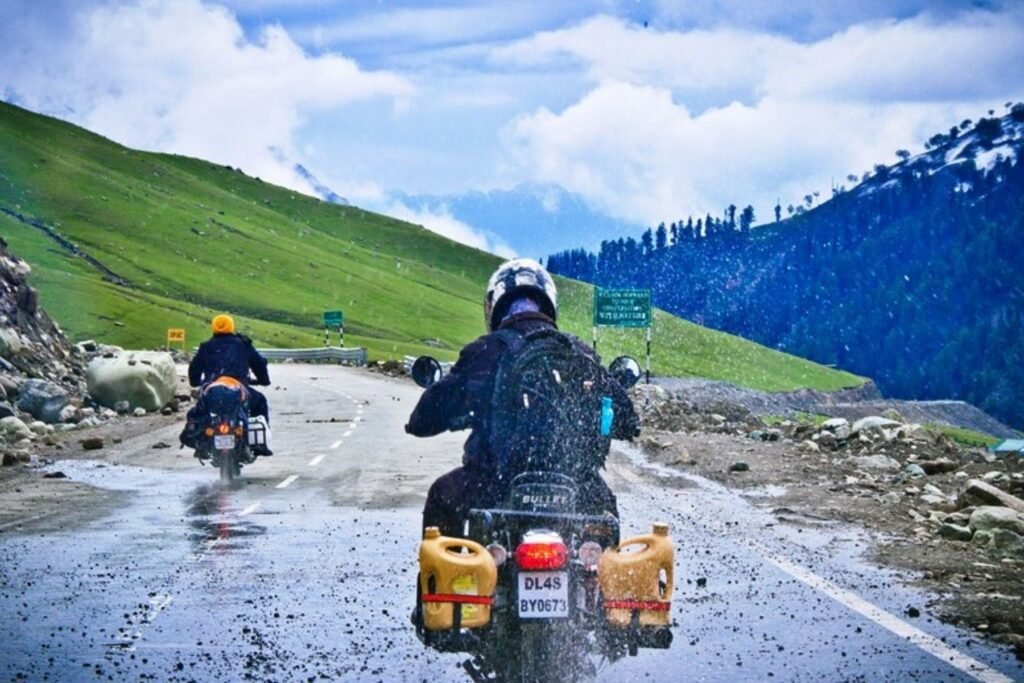

Explore tour: 13-Day Vietnam Adventure Motorbike Street Food Sightseeing
2. Choosing a Safe Motorbike Rental
A reliable motorbike makes all the difference. Poor-quality rentals are a major threat to Ha Giang Loop safety.
- Rent from a reputable agency with good online reviews.
- Inspect tires, brakes, horn, lights, and mirrors before riding.
- Ask for a semi-automatic if you’re new to motorbiking in Vietnam.
3. Understanding Legal & License Requirements
Many travelers don’t realize that riding in Vietnam without the right license could void your insurance. And worse—it could land you in legal trouble in case of an accident.
- You need an International Driving Permit (IDP) with a motorbike endorsement.
- Vietnamese traffic laws apply—helmets are mandatory.
- Police sometimes set up license checkpoints, especially on the Loop.
4. Joining a Guided Tour
If you’re not confident riding solo, guided tours are a fantastic alternative that enhances Northern Vietnam safety overall.
- Tours include bike maintenance, safety briefings, and experienced guides.
- They also arrange accommodation and handle route planning.
- In remote areas, help is hard to find—tours come with support vehicles or backup plans.
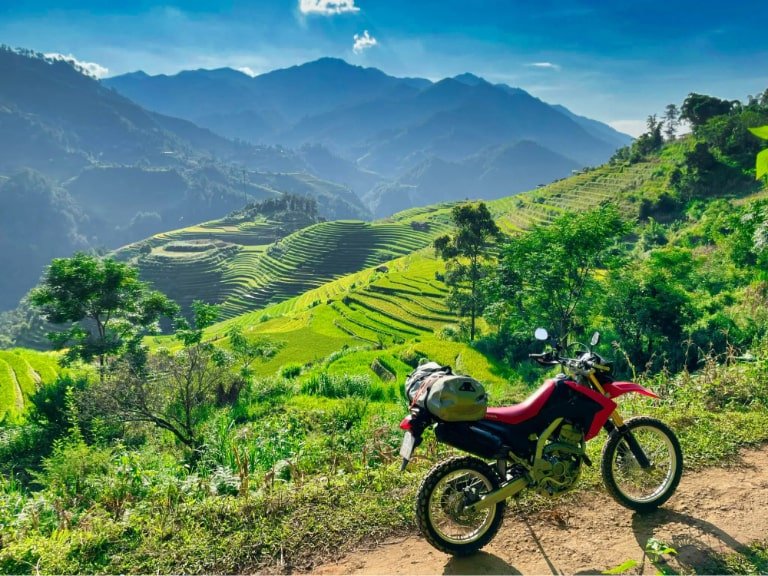

🏔️ View more: Top 10 Best Sapa Vietnam Hotels For Tourists
Staying Safe in Remote Northern Vietnam Areas
While Sapa and Ha Giang are popular, Northern Vietnam includes many less-visited villages and border regions. These off-the-grid locations offer rare experiences but require extra caution.
1. Health & Emergency Services
Medical care in remote areas is basic at best. Small clinics may not have English-speaking staff or the supplies to treat serious injuries.
- Bring a first-aid kit with bandages, antiseptic, and meds for stomach issues.
- Know where the nearest hospital is located before your trip.
- Download offline maps in case of zero signal.
2. Cultural Sensitivity and Behavior
In rural villages, traditions run deep. Respecting local customs is not only polite—it keeps you out of awkward or dangerous situations.
- Dress modestly, especially in ethnic minority villages.
- Ask before taking photos of locals or homes.
- Avoid loud behavior, alcohol overuse, or wandering alone at night.
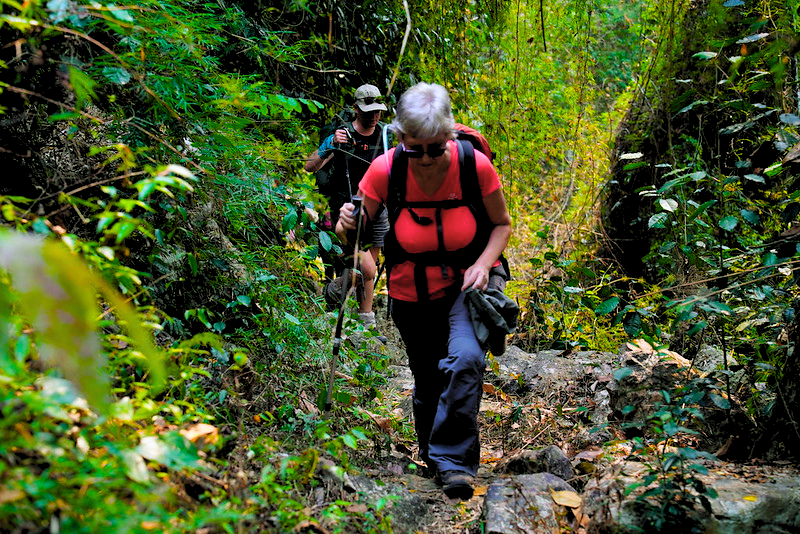

3. Wildlife and Environmental Hazards
Insect bites, leeches during rainy season, and stray dogs can cause health issues.
- Use mosquito repellent day and night.
- Wear long pants when hiking.
- Do not pet unfamiliar animals.
🏔️ Embrace the Beauty: 6 Reasons to Explore Sapa, Vietnam
Top General Tips for Northern Vietnam Safety
Staying safe isn’t about avoiding adventure—it’s about being prepared. These tips apply across all of Northern Vietnam, no matter your travel style.
- Stay connected: Buy a local SIM card or eSIM with data for emergency calls.
- Inform someone of your plans: Let your hostel, family, or guide know your route.
- Avoid risky behaviors: No alcohol before trekking or riding.
- Pack for all seasons: Weather shifts quickly in the north.
- Carry cash: ATMs are rare in rural areas.


Explore: 14 Days Join Group Vietnam North To South With Phu Quoc Island
FAQs About Northern Vietnam Safety
1. Is it safe to travel solo in Northern Vietnam?
Yes, but make sure to stay on marked routes, keep someone updated on your location, and avoid traveling at night in remote areas.
2. What’s the biggest safety risk in Sapa trekking?
Slippery trails and sudden weather changes. Hiring a local guide significantly improves Sapa trekking safety.
3. How dangerous is the Ha Giang Loop?
It depends on your motorbike experience. For beginners, the winding roads can be risky—so consider a tour to ensure Ha Giang Loop safety.
4. Can I ride the Ha Giang Loop without a license?
Technically yes, but legally and for insurance purposes, you must have a valid IDP with motorbike certification to ride safely.
5. Do I need travel insurance?
Absolutely. It’s a crucial part of Northern Vietnam safety, especially in case of accidents or medical emergencies in remote regions.
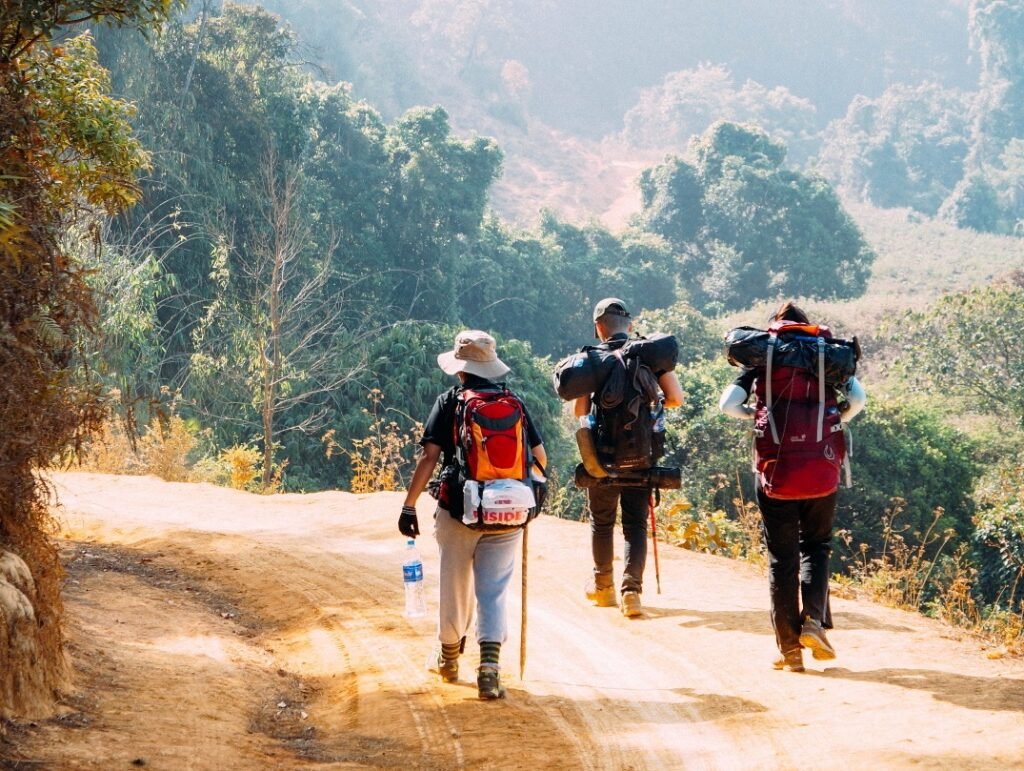

Northern Vietnam is wild, wonderful, and full of surprises. Whether you’re trekking through the cloud-kissed hills of Sapa or cruising along the cliffs of the Ha Giang Loop, prioritizing your safety doesn’t take away from the fun—it enhances it.
From weather prep to hiring the right guide, from choosing safe bike rentals to respecting local traditions, you can make your trip one of the best experiences of your life. Northern Vietnam safety starts with awareness and continues with preparation.
So go explore. Be bold, but be wise. And remember, the most unforgettable stories are the ones where everyone comes home safe.
Our all-inclusive trips cover every detail, from accommodations and transportation to unforgettable experiences, depending on your interests (Our Customized Private Tour for each customer to Vietnam 🇻🇳). Ready to embark on your next adventure?
👉 View more: Vietnam Nightlife Guide: From Bustling Bars to Cultural Shows
Ask a question
Leave a Comment (0)
No questions yet. Be the first to ask a question!

